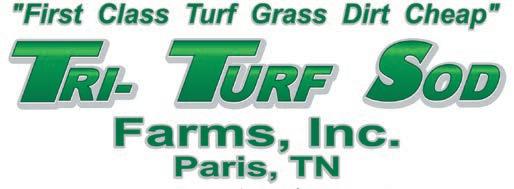MEMBER SPOTLIGHT ON JORDAN CLARK



































Ihope everyone is navigating the craziness of the transition from winter into spring, where Mother Nature for sure keeps us on our toes. Your board recently took advantage of this final reprieve before the busy growing season with our second annual strategic planning retreat. We finalized our newly revamped Mission Statement and Vision to help direct our path as we all work together to shape the future of the Tennessee Turfgrass Association.
MISSION – a formal summary of the aims and values of an organization. WHO are we?
A diverse group of turfgrass professionals and environmental stewards, investing in education, promotion, and advancement of the green industry in the State of Tennessee and beyond who work in partnership with the University of Tennessee Turfgrass Department.
VISION – WHAT the organization desires to achieve in the long-run, generally 5 – 10 years. What do we want to accomplish?
1. Maximize synergistic partnership between the University of Tennessee Turfgrass Department and the Tennessee Turfgrass Association
2. Grow TTA membership inside and outside of the state of Tennessee
3. Provide world-class continuing education opportunities to our members
4. Mentor and develop future leaders in the turfgrass industry

5. Recognize and reward current and future member achievements through awards and scholarships
6. Further develop financial streams to fund turfgrass research, education, scholarships, and community action and outreach programs (TTA Endowment)
We also spent a day in breakout sessions working to develop our strategies for how we plan to accomplish our vision and goals for TTA.
We are all very excited about what the future holds and feel that the TTA is a very strong position to accomplish all this and more.
Hoping and praying that everyone has a great 2023 season in the world of turfgrass.
Godspeed, Chris Sykes TTA PresidentThe Official Publication of the Tennessee Turfgrass Association, the Tennessee Valley Sports Field Management Association and the Tennessee Golf Course Superintendents Association
Tennessee Turfgrass is the official publication of The Tennessee Turfgrass Association
400 Franklin Road Franklin, Tennessee 37069 (615) 928-7001
info@ttaonline.org www.ttaonline.org
PUBLISHED BY
Leading Edge Communications, LLC
206 Bridge Street Franklin, Tennessee 37064 (615) 790-3718
info@leadingedgecommunications.com
EDITOR
Dr. James Brosnan
TTA OFFICERS
President
Chris Sykes
PGA Golf Club
Vice President
Ryan Storey Line to Line LLC
Secretary / Treasurer
Ryan Blair, CGCS
Holston Hills Country Club
Past President
Doug Ward
Belle Meade Country Club
Executive Director
Melissa Martin
Tennessee Turfgrass Association
TTA 2023 BOARD OF DIRECTORS
Jason Bradley Bart Cash
Ben Dodd
Dan Johnson
Ashley Gaskin
Cal Hill
Jeff Huber
Jeff Kuhns
Bill Marbet
Bob McLean
Jason Sanderson
Mark Stovall
John Wagnon
Jeff Wyatt
TTA ADVISORY MEMBERS OF THE BOARD
Bill Blackburn
Dr. Jim Brosnan
Joe Hill
Dr. Brandon Horvath
Lynn Ray
Jeff Rumph
Dr. Tom Samples
Dr. Dennis Shepard
Dr. John Sorochan
Dr. Wes Totten


Ihope that this finds all of you in good health and doing well. February and March have once again not failed to disappoint as we were hit with plenty of rain and other extremes that come along with it. I am hopeful that everyone was able to recover and get everything done in preparation for the growing season. It would be great if we have already seen the worst of it. As the conference season is winding down, I find it refreshing to see everyone and that our associations are in such a good place. The MTGCSA board was able to meet, in person, and put a strong schedule together for 2023. We started off this year on April 12 at Nashville Golf and Athletic Club. Our speakers that day were Dr. Bill Kreuser from the University of Nebraska
and Dr. Wendell Hutchens from the University of Arkansas. If you didn’t make it, stay tuned and be sure to put the next meeting on your calendar.
In closing, I want to encourage us to focus on learning new things in 2023. Our industry is ever-changing and we cannot stop improving ourselves. Also, remember that we are all here for each other; it is the strongest purpose of this association. Have a great 2023.
Justin Browning MTGCSA President

pring is here and so is your busy season. Have you filled all your open positions? I know like many, you are probably still searching for employees. Many see the fact of fewer employees as a downturn in our industry for employment. I think this issue brings up an important topic – let’s make sure we are mentoring our younger generation of turf managers when we have an opportunity.
A youth movement is important in any field, especially ours. So when you get an intern or a new younger employee, make sure you are taking your time to teach them and show them the correct ways. Be patient with them and remember they are not you, they learn differently and might just need different coaching.
Dr. Goatley and I did a presentation on mentorship at the SFMA Conference, and I’d love to send you some of the research we found. If you are interested please reach out. If we don’t do this now, turf managers could become extinct.
TVSFMA is growing and it’s exciting to be a member. If you are interested in becoming a member or sponsor, please reach out. Our next meeting is July 12th in Murfreesboro, and I can’t wait to see you all there.
John Clintsman TVSFMA PresidentMAY 8, 2023
ETGCSA May Meeting
Country Club of Asheville
Asheville, NC
MAY 16, 2023
MAGCSA May Meeting
The Sporting Club at Mallard’s Croft
Byhalia, MS
MAY 23, 2023
MTGCSA May Meeting
Old Hickory Country Club
Old Hickory, TN
JUNE 13, 2023
ETGCSA June Meeting
Warriors Path Golf Course
Kingsport, TN
JULY 24, 2023
ETGCSA July Meeting
WindRiver Golf CLub
Lenoir City, TN
AUGUST 10, 2023
FedEx St. Jude Championship
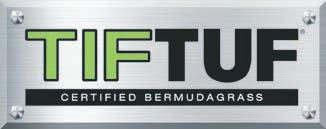
TPC Southwind
Memphis, TN
OCTOBER 23, 2023
33rd Annual East Tennessee Scholarship and Research Golf Tournament
Tennessee National Golf Club
Loudon, TN
JANUARY 8 – 10, 2024
58th Annual TTA Conference & Trade Show
Embassy Suites
Murfreesboro, TN
For event news and updates throughout the year, visit www.ttaonline.org
www.tgcsa.net
Advertising: For display and classified advertising rates and insertions, please contact Leading Edge Communications, LLC, 206 Bridge Street, Suite 200, Franklin, TN 37064, (615) 790-3718, Fax (615) 794-4524.


This introductory, online course will provide you with the education and skills needed to effectively establish and maintain turfgrasses. This course is taught by University of Tennessee Faculty and Staff. It is entirely online and self-paced. It is ideal for those who are new to the industry as well as those looking to market themselves as industry professionals.
Who should take this course?
This course is well-suited for anyone who manages turfgrass on lawns, sports fields, or golf courses, as well as those who are new or looking to enter the industry.
The course contains 11 modules and is entirely self-paced. On average, it should take 12 to 15 hours to complete.
This course provides introductory information on:
• Introduction to UT Extension
• Turfgrass Identification
• Turfgrass Selection
• Soil Fertility
• Water Management
• Planting and Establishment
• Turfgrass Weeds
• Turfgrass Diseases
• Turfgrass Insect Pests
• Integrated Pest Management
• Maintenance and Operation of Turfgrass Equipment
Who teaches this course?
Course materials were developed by University of Tennessee faculty, staff, and students with expertise in turfgrass management.
Does this course focus on warm- or cool-season turfgrass?
The course covers both warm- and cool-season turfgrass management.
How much does the course cost?
The course costs $250 per person
How to register for the course:
The course is administered through Canvas. You can register for the course at https://www.tnturfgrassweeds.org/clcp BULK REGISTRATION of multiple individuals from the same business is available.
Here’s what participants say about the CLCP Program:
“This has hands down been one of the most educational courses I have ever taken. Everything was clear and concise, and the quizzes hit on the most important material from each section!”
“I thought this was a great introduction of the basics of turf for a beginner coming in new to this field or even for field veterans. Excellent work!”
Program Coordinator Anna Duncan says, “Our hope for this course is to provide a strong, researchbased education upon which our participants can build a successful career. This program provides a foundational understanding of both the science and the art of turfgrass management. Both new and seasoned professionals from all facets of the turfgrass industry can benefit from this course as it highlights the “why” behind many management practices. Course topics are taught through realworld examples, conversations with industry experts, and research-based resources.”





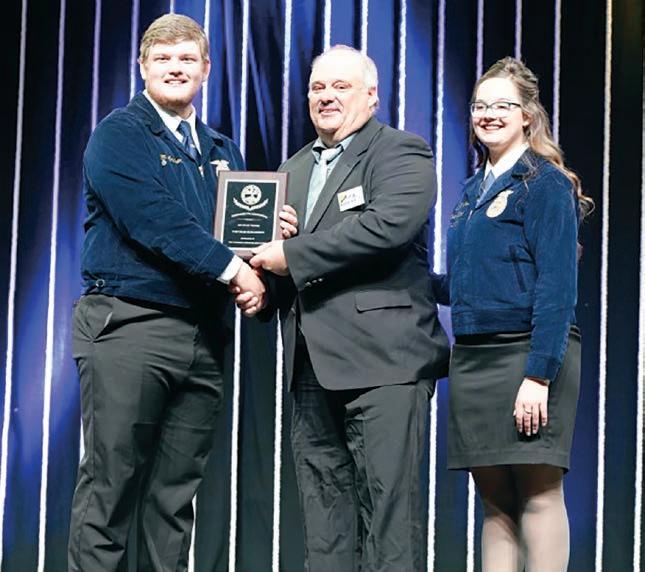

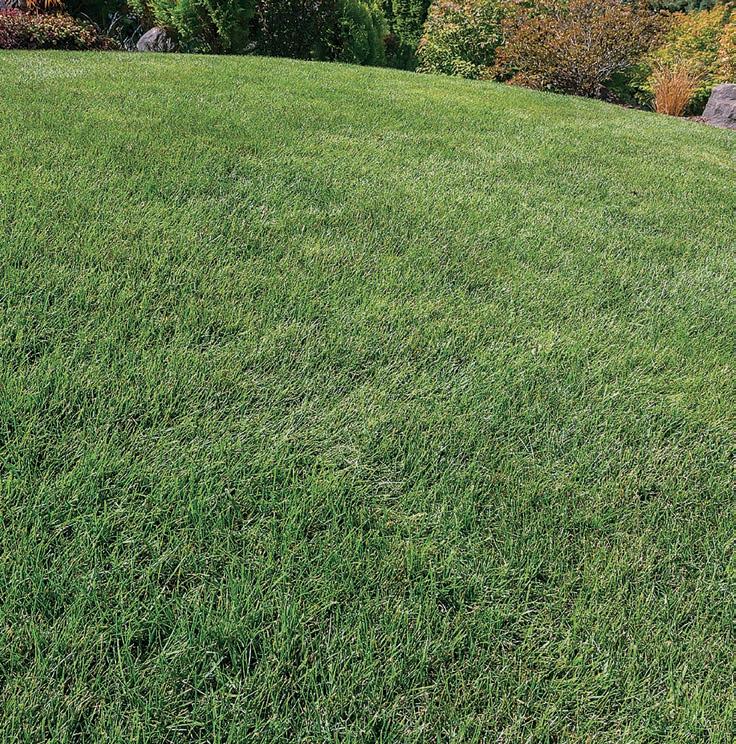
Hello Tennessee! My name is Becky Bowling, and I have recently been hired as a faculty member in the Plant Sciences Department at The University of Tennessee in the Turfgrass Extension position. I have been an Assistant Professor and Extension Specialist in Texas for the past five years, where I have gained extensive experience working with county agents, sod producers, golf course superintendents, professional lawn care operators, sports field managers, cities, and more. I am looking forward to bringing my experience to Tennessee to build strong relationships with Tennessee’s renowned turfgrass and green industries and their many critical stakeholders across the state. I am looking forward to meeting as many of you as possible during my initial months in this position. My official start date is May 1, 2023.
Until we can meet in person, I would like to share some of my background and experiences. I am originally from Carrollton, Texas (near Dallas). I completed my undergraduate






and master’s degrees in Horticulture at Texas Tech University where I primarily focused on sustainable landscape management practices with particular emphasis on native plants. From there, I worked and earned my PhD at the University of Georgia in environmental turfgrass management. For the past several years, my research and extension efforts have focused on evaluating and communicating best management practices for turfgrass to promote environmental stewardship and resource-use efficiency in turfgrass systems and related urban greenspaces. Much of my efforts have centered on water with particular emphasis on water efficiency, water capture, and water quality protection. In my spare time, I hike, practice vinyasa yoga, and spend time with my husband Will and our three pets, Biscuit (dog), Hubert (dog), and Phil (cat).
When I arrive in Knoxville in May, I am looking forward to making purposeful trips across Tennessee to meet with county agents, turfgrass industry leaders, and other critical stakeholders to listen and learn about the Tennessee turfgrass industry and how I can be of the greatest service in my new role. Through these dialogues and coordinated discussions with my new collaborators at UT, I look forward to building a thoughtful and integrated extension and research program that builds on the already incredible UT turfgrass program and supports the Tennessee turfgrass industry across the state.
From my experience in Texas, I have learned the importance of a thoughtful and coordinated approach for building both a successful research and extension program. I thrive in a team environment, and have extensive experience working with scientists, industry leaders, and stakeholders spanning diverse backgrounds, focus areas, and interest groups on collaborative projects. Coming into this new position, I will put the greatest emphasis on listening, learning, and building new relationships as a foundation for my program going forward. I look forward to working along the UT turfgrass team to build a program centered on economic and environmental sustainability leveraging new technologies and outreach tools to have the greatest impact. Please don’t hesitate to reach out to me once I have started. I look forward to getting to know you!
Our
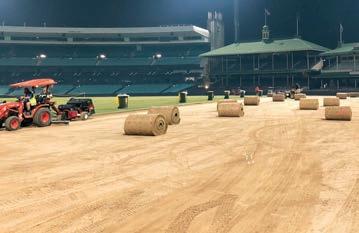
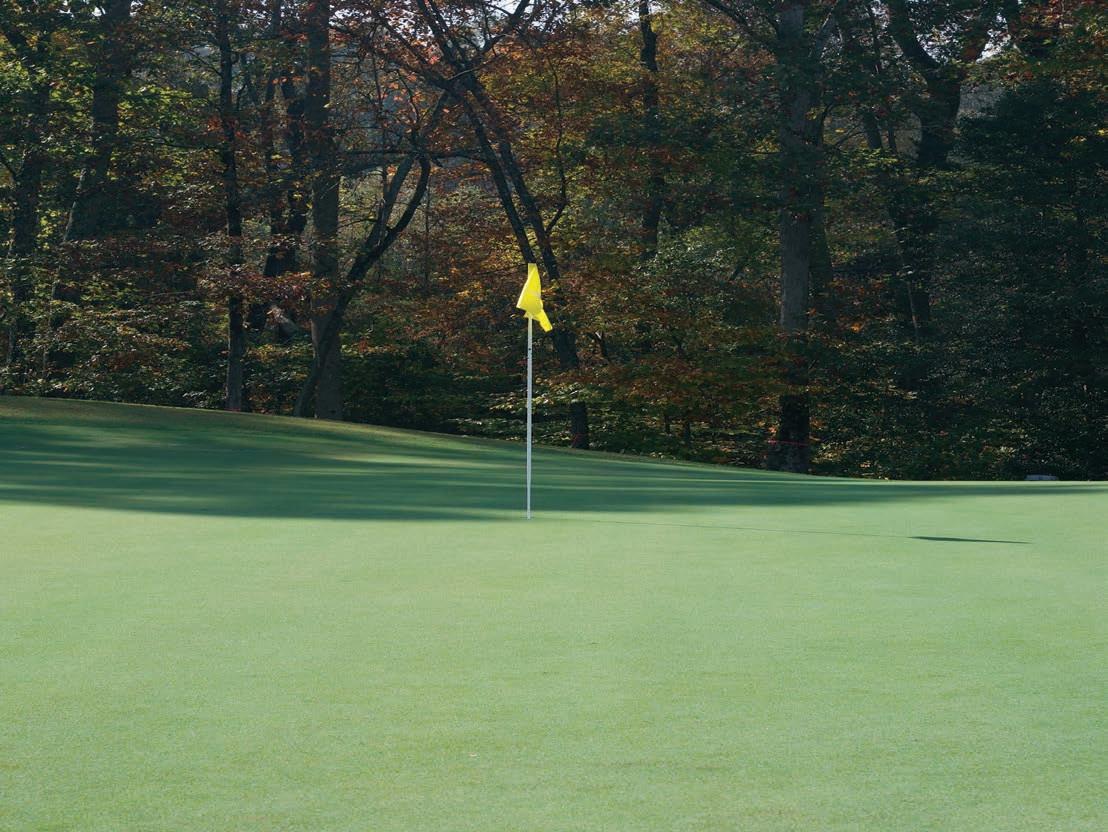
1. What is Matrix?
• Reinforced product grown at bottom of sand based profile

• Sprigged field to insure highest percolation rates
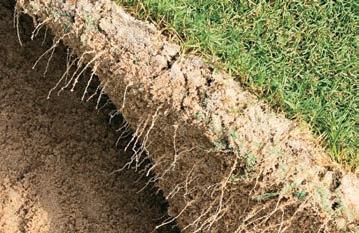

• Ready to Play product
2. Where is it used?
• High demand athletic fields: football, soccer, baseball, softball, and rugby.

• High traffic areas: Horsetracks, goalmouths, and tournament crosswalks.
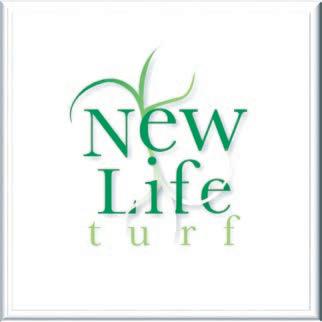
How many years have you been in this position?
I have been the Superintendent at Kahite since June 6th, 2016. The transformation of the golf course is due to the dedication and commitment that the team has made over the years to making Kahite the special place that it is today.
How did you decide to pursue a career in turfgrass management?

I’m not sure how I made the decision. It has always been one of those “meant to be” things that inevitably worked out for the best. One thing led to another, as things do, and they fell into place: I grew up mowing lawns in the neighborhood and was always involved in sports as a kid. Golf is a family sport, but I did not pick it up until 11 years old or so. I remember applying for golf course jobs while in high school for summer help, thinking it would be a fun job. I was never hired. However, I did play for the golf team and did fairly well, but I enjoyed the aspect of being outside and active more than the scorecard. My first year in college was at The University of Kentucky where I planned on becoming an architect. I gave it a shot and quickly became uninterested. My sister was in Veterinarian School at The University of Tennessee, and she mentioned a program where you can learn to become golf course superintendents, baseball field managers, and so on. After year one in college, I transferred back in-state to the University of Tennessee and the rest is history.

What path led you to your current position?
My first golf course job was at Gettysvue Country Club in Knoxville, Tennessee. Jeff Dudych was and still is the Head Superintendent. I remember thinking, “man these are some really cool homes, and all I know is Bruce Pearl lives here.” I also remember driving through the neighborhood and seeing the sightlines of the golf course and thinking how well it was maintained, which inevitably attracted me to apply. Thankfully, Jeff gave me my first shot and my employment continued throughout my entire college career.
While in college, the Turfgrass Program offered a way to earn college credits and receive real-life experience working with different grasses on the UT research farm. I remember thinking this was a steal for class credits and it got me out of the classroom. With the thoughtfulness of Jeff in allowing me to explore other facilities, I was able to attend additional golf internships in North Carolina and for the Baltimore Orioles under Head Groundskeeper Nicole Sherry. I enjoyed all my experiences and the lessons that came with them, but most of all I was grateful to have found an industry that I would be fortunate to serve.

After graduation, I was not ready to leave East Tennessee, so I started looking and found Tellico Village. The entire time I was getting an education, I had no idea the place existed. I applied for the Assistant Superintendent position at Tanasi Golf Club under Patrick Rose, who is now at Kansas City Country Club. I always thought that my time in Kentucky made me a shoo-in with Pat being a former Wildcat. I worked under Pat for less than a month. Pat moved to Signal Mountain in Chattanooga and Chris Sykes, Golf Course Superintendent at Toqua Golf Club, offered me the position to work with him so I took it. Chris and I worked alongside each other for five years at Toqua transforming it into a “classic” golf course. I will forever be grateful for the time spent under his leadership as it prepared me for my first Golf Course Superintendent job at The Links at Kahite.
What is the best part of your job?
The best part of the job is and always will be “The People.” Our job as managers is not always easy, especially when walking into a new environment. I believe patience and time will bring good fortune. Throughout my years at Kahite, I have had the pleasure of working alongside some special people that make the average workday seem like a vacation. In our everyday morning meetings, I find myself looking around the room and am reminded how different we all are. We all come from different backgrounds, different age groups, different outlooks and opinions, yet somehow we ended up together in our current life and have found a way to work together as a team in providing the best golf experience for our membership. That is special.
What are some unique challenges of your job?
I would not call this challenge unique, but it is the one that trumps all the other challenges that come to mind and that is the amount of play. I believe in the quote, “proper preparation prevents poor performance.” That holds true to many operations but especially Tellico Village. To provide world-class golf conditions in our environment, you must plan precisely before you can execute and when it’s time to execute, GO!



How many employees are part of your team?
We have a great setup here in Tellico Village. Generally, Kahite will have 16 – 20 Team members. 10 of us are full-time year-round, 3 – 4 of us are full-time seasonal that consist of local high school or college students, and the other 3 – 6 of us are part-time seasonal staff that consist of retired villagers that enjoy staying active and take advantage of the free golf given to all employees. I could not be luckier to have two individuals by my side that help drive the operation. Equipment Manager Kim Duffey is the best at her craft and Assistant Golf Course Superintendent Josh Gunter does an incredible job leading our team. Kahite is very fortunate to have them not only for their talents and commitment, but more importantly because they are genuine people.




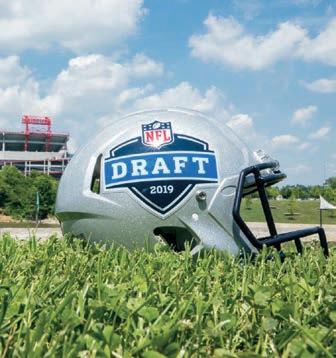
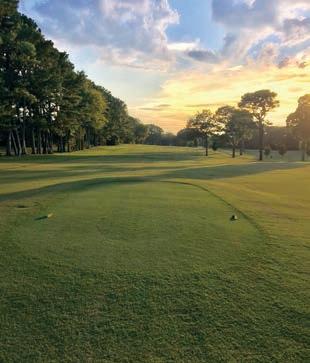







What do you feel is the biggest challenge facing the turfgrass industry right now?
Generally, employment has been the answer and to some degree, it may always be the most challenging aspect of the job. But, if I were to answer this in our current state, I would answer the challenges of replacement parts and rises in costs across the board of our operations. Parts/ Equipment are not as timely as we need due to the manufacturing processes, and price increases have made it difficult to ask for more money to keep the standards of service where we feel they need to be or what is being asked from us.
Why is it important to you to be involved in industry organizations like TTA?
I believe it is important to surround yourself with others in the industry. We all are wired in a certain way that makes us relatable. Our everyday lives in the workplace are not too different as we all hold ourselves accountable for providing the best quality of service possible. We take pride and ownership in everything we do. Seeing and hearing other testimonies can bring us together and add benefit to our own mindset and areas of responsibility.
What is one lesson you’ve learned the hard way in your career?
That your golf course is not the only thing that matters. There are a lot of parts that make up the overall experience at your golf club or facility. Yes, the golf course may attract the golfer to come play, but the overall experience is what it is all about. You may not always get exactly what you want but understanding the entire operation will open your eyes to see the big picture. Tellico Village taught me that.
Do you have a mentor in the industry? Who?
There is no doubt the person I have spent the most time with and learned the most from is Chris Sykes – Director of Agronomy at PGA Village. I worked for Chris as an assistant for five years and three years as a Superintendent when he was appointed Director of Golf in Tellico Village. I remember conversations with Chris, and he would talk about his days at The Honors Course while working for David Stone. He always said that he “worked for the right guy” and that is something I can easily say as well. Chris taught me “effort” more than anything.


What do you do in your free time?
Free time is hard to come by in this industry, but at least in this part of the country we are blessed with seasons that allow us to get away from the golf course to focus on other areas of life. I generally spend all free time with my family. My wife Mary and I have two little ones that keep us busy doing what one- and three-year old parents generally do. We love being parents and if there is a chance for us to get away for a date night, we take advantage as soon as the opportunity presents itself.
Mary and I will be celebrating our seven-year wedding anniversary this May. I’m not confident I would be able to accomplish the life as a husband, father, and golf course superintendent without her patience and support. She has given me two wonderful children: Ryan is three years old and Molly is 17 months. We have a dog named Snickers that has been with us for 10 years.
What would your advice be for people entering the turfgrass industry now?


The Turfgrass Industry is an everevolving business. It seems in the 12 years that I have been a part of it as a professional, change is normal. The number of Assistant Superintendent jobs open is a little alarming and would make all of us question what the future looks like, but that also means there are incredible opportunities open for the willing. My advice for the next generation of Assistant Golf Course Superintendents, groundskeepers, field managers, etc.… is to dive in and keep your head down. Patience for the next opportunity or promotion can be a lot to ask of yourself, but there are lessons to be learned in the process. We are always learning and evolving to be better versions of ourselves. Mike Tomlin said, “its not what you’re capable of, it’s what you’re willing to do.” Learn, work hard, ask questions, and get better every day. Hard work pays off.

Since discovering and understanding plant hormones, plant growth regulators (PGRs), both naturally and synthetically derived, have been used to suppress or promote plant growth. Their applications have varied from industry to industry to address varying critical issues. In the 1950s, early adopters like the grape and apple industries primarily used PGRs for blossom and fruit thinning to improve marketable yields. The floriculture industry has used PGRs extensively for half a century to meet the plant specifications of their picky clientele (I’m looking in the mirror here). In the 1970s, utility arborists began applying PGRs commercially to combat the age-old problem of trimming trees away from utility lines. But for the professional landscape operator, PGRs haven’t become mainstream. Instead, their utilization has been more niche.
Take Auburn University’s campus for example. With over 700 acres of landscape to maintain, the use of PGRs is primarily limited to maintenance hazards. “We’d like to start using more PGRs on campus, but right now, we are only using them around fences and barriers that are difficult to mow around,” said Wes Miller from Auburn University Landscape Services. So, why aren’t PGRs more widely used in landscape management? The research convincingly favors their applications regarding enhanced blooming, improved plant health, and less frequent pruning. Like many changes to common practice, market penetration and adoption rates are primarily driven by economics. That is exactly what the research could not demonstrate convincingly. At least, not 10-20 years ago when most of the work was conducted. Things have changed. Today, the value-added proposition is less about economics and more about labor conservation.




With an evaporating labor pool and demand for services at an all-time high, landscapers like Toby Hughes with Auburn Grounds Inc. have begun incorporating PGR products into their management practices. For them, it wasn’t as much about economics as it was about managing labor reallocation and boosting morale. “Our guys dislike pruning. It was easy to convince them to spray PGRs instead of picking up the hedge trimmers.” Others, like Dennis Pritchett from JubileeScapes think it’s a “win-win, a game-changer. Our customers receive a healthier plant, and we save three or four crews a summer of pruning. The manufacturers are doing a better job educating and that’s helping us communicate the advantages to our clients.” The manufacturers are noting the change as well. “I’ve had about twice as many requests to present on landscape PGRs this year compared to the last three or four years prior,” Dr. Kyle Briscoe, Senior Technical Development Manager with SePRO, remarked. He added, “I think the labor market is driving a lot of first-time use.”


For those looking for an extra hand, it’s essential to understand the various PGR formulations available in the market and how they might be best utilized.




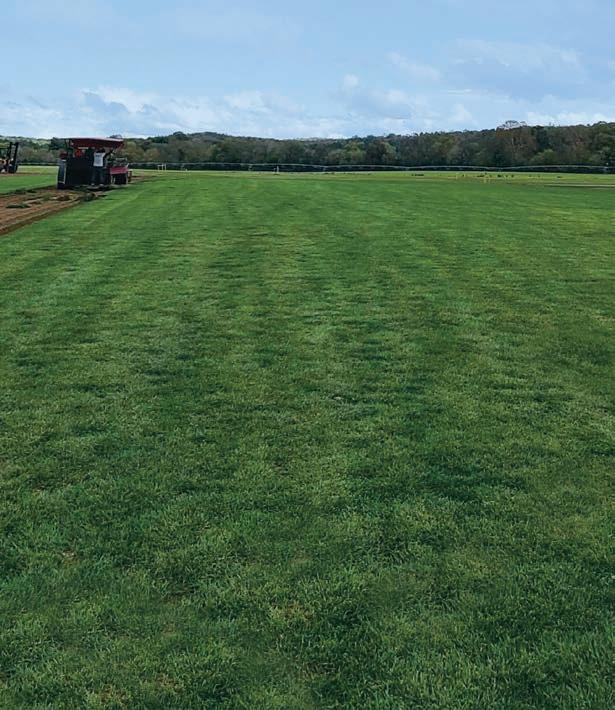
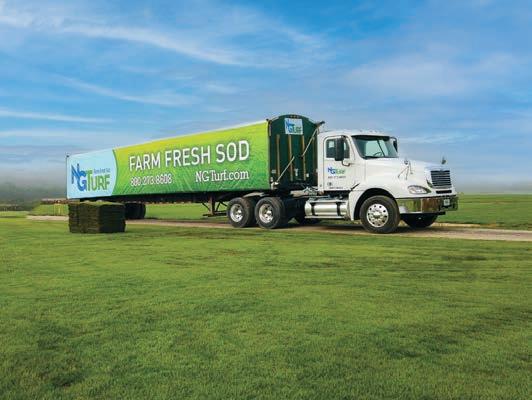

It’s challenging to beat the simplicity of a granular application. Measure the application area, weigh the granules, and evenly distribute them across the treatment area. Perhaps this simplicity and our familiarity with granules often lead to misapplications and varying results. You understand if you’ve
ever striped a yard following a granular fertilizer application. Timing is critical with this formulation. Depending on several factors (species, plant size, and environmental conditions), granular applied PGRs need time for release, uptake, and translocation to the meristematic regions of the plant. As a general suggestion, these products are best used immediately after pruning.
Does calibration keep you up at night? Rest well knowing that concentration with liquid foliar applications of PGRs is most important. Relative to granular products, foliar applications are fast acting. For these reasons, foliar applications have quickly become the preferred method of PGR application in
the landscape. Shortly after a flush of new growth, mix the appropriate concentration and apply evenly until drip occurs. Leaf cuticle thickness, plant vigor, and environmental factors may influence the longevity of regulation. For the savvy landscaper, a combination of granular and foliar spray products may extend the effectiveness of PGRs. As always, follow the label to avoid exceeding application thresholds.

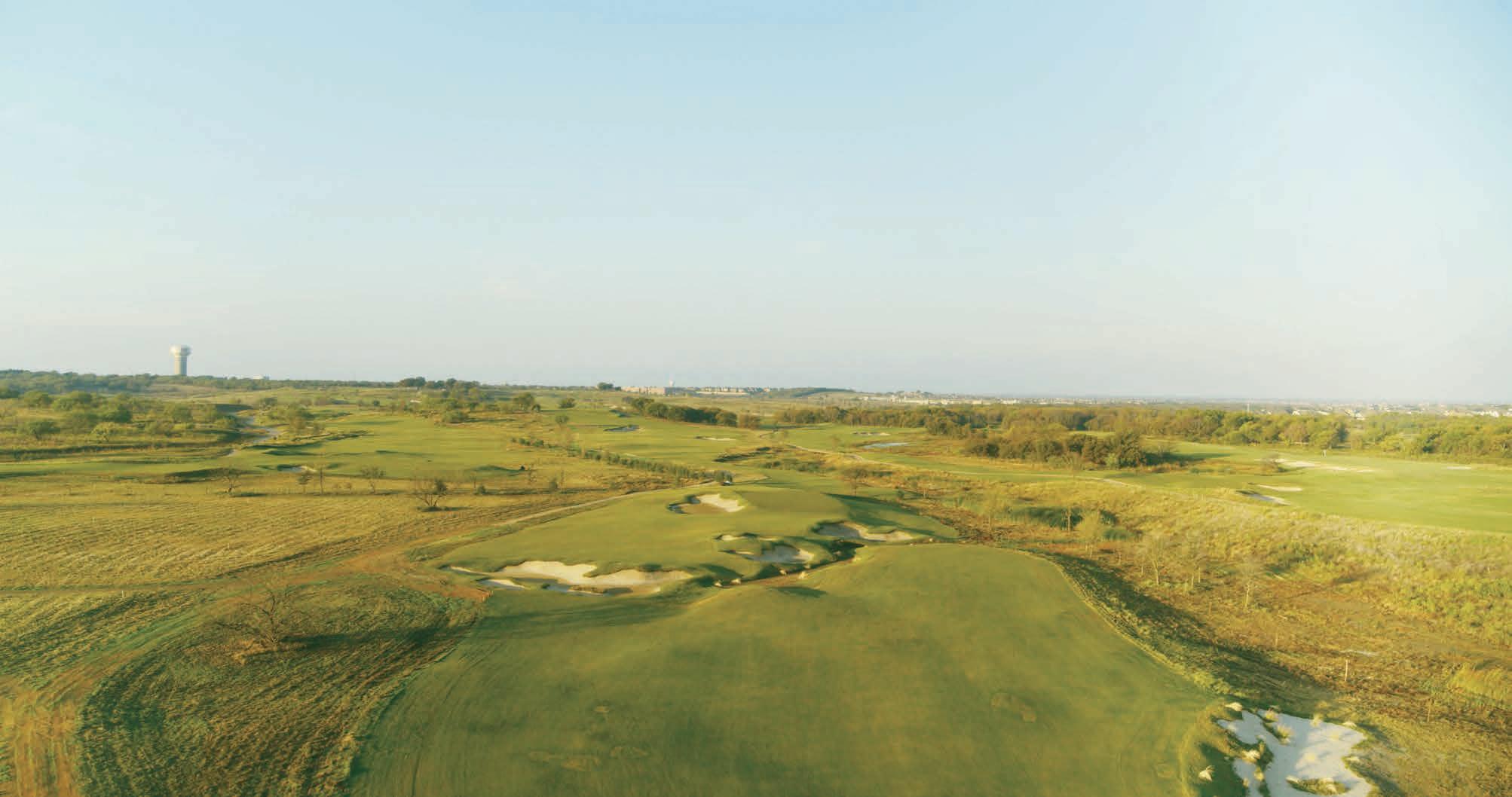



Trees are often the most significant investment and liability in the landscape. Whether they are century-old oaks, newly planted ‘Princeton’ elms, or established sugar maples in the middle of a construction zone, arborists and urban forestry specialists utilize PGRs to minimize tree stress. As it’s often impractical to apply a foliar spray, the preferred application method for trees and large shrubs is direct soil injection or drenching around the trunk’s basal flare. Like granular applications, these products will take time to translocate to the meristematic regions of the stems. As always, read the label carefully. The dosage requirements for trees vary by species sensitivity and size.
I was told Burton Sperber, founder and “Head Gardener” of ValleyCrest Companies, once said, “The economy can slow, but the grass always grows.” If the grass…or woody ornamentals… are growing a little too quickly for you, consider the new value proposition PGRs have to offer.
*The products mentioned in this article are only examples of PGR products, not an exhaustive list or an endorsement of any product*
Author: Paul Bartley, Ph.D. has been an Assistant Professor, Department of Horticulture at Auburn University since 2019. His appointment is 60% Research and 40% Teaching. He received his B.S. and Master of Science at Auburn University and his Doctor of Philosophy in Horticulture Science from North Carolina State University. He can be reached by email at paul.bartley@auburn.edu
University of Tennessee
5201 Marchant Drive • Nashville, TN 37211-5201
(615) 832-6802 • fahale@utk.edu ag.tennessee.edu/spp
Tom Samples, Ph.D. Professor, Turfgrass Extension
The University of Tennessee
2431 Joe Johnson Drive • 252 Ellington Plant Sci. Bldg. Knoxville, TN 37996-4561
(865) 974-2595
turf.utk.edu
• tsamples@utk.edu
• @tnturfman
John Stier, Ph.D.
Associate Dean, The University of Tennessee 2621 Morgan Circle • 126 Morgan Hall Knoxville, TN 37996-4561
(865) 974-7493 • jstier1@utk.edu
turf.utk.edu • @Drjohnstier
Greg Breeden
Extension Specialist, The University of Tennessee 2431 Center Drive • 252 Ellington Plant Sci. Bldg. Knoxville, TN 37996-4561
(865) 974-7208
• gbreeden@utk.edu
tnturfgrassweeds.org • @gbreeden1
Kyley Dickson, Ph.D.
Associate Director, Center for Athletic Field Safety
Turfgrass Management & Physiology

(865) 974-6730
• kdickso1@utk.edu
@DicksonTurf
Brandon Horvath, Ph.D.
Associate Professor, Turfgrass Science

The University of Tennessee
252 Ellington Plant Sci. Bldg. • 2431 Joe Johnson Drive Knoxville, TN 37996
(865) 974-2975
turf.utk.edu
• bhorvath@utk.edu
• @UTturfpath
John Sorochan, Ph.D.
Professor, Turfgrass Science The University of Tennessee
2431 Joe Johnson Drive
• 363 Ellington Plant Sci. Bldg. Knoxville, TN 37996-4561
(865) 974-7324
• sorochan@utk.edu
turf.utk.edu • @sorochan
Alan Windham, Ph.D.
Professor, Entomology and Plant Pathology
The University of Tennessee
5201 Marchant Drive • Nashville, TN 37211-5201
(615) 832-6802
• https://ag.tennessee.edu/spp/
@UTPlantDoc
Inthe midst of a labor shortage that seems like a long-term challenge for the golf and turfgrass industry, it can be hard to find the light at the end of the tunnel. Finding young workers who are willing to do the work, let alone have experience in maintaining a golf course seems like a fool’s errand.

One student in middle Tennessee is blazing a trail for a promising career in the golf industry, and hopefully proving to others with an interest in turfgrass management/golf course operations that the career is within reach.
Dane Gilbert is a golf enthusiast who designed and built a course in his own (and his neighbors’) back yards. He maintains the nine-hole course and hosts an annual twoman scramble. Dane is a 14-year-old 8th grade student at Hickman County Middle School in Centerville, Tennessee. The story of his course, DGC Tallgrass, is one of industry collaboration, community support and a determined young man with a vision.
Dane and his father, Brad remember the humble beginnings of DGC Tallgrass way back in 2019.

Dane’s uncle Alan Gilbert gifted Dane a cup and flag so that Dane could get in some practice at home. As part of a golfing family, he’d been swinging a club since he was old enough to hold one, so a backyard practice hole was a natural step. Shortly after he set up his practice hole, covid shut down everything, and Dane got to work.
“During covid, we took Dad’s lawn mower and cut it down like a green. Then as it went on, I got more and more flagsticks and flags and I started planting them in the yard,” Dane shares. “Then I started designing the holes, and it just kept getting bigger and bigger. The neighbors saw what I was doing, and they offered for me to join their land, so I could put holes there.”
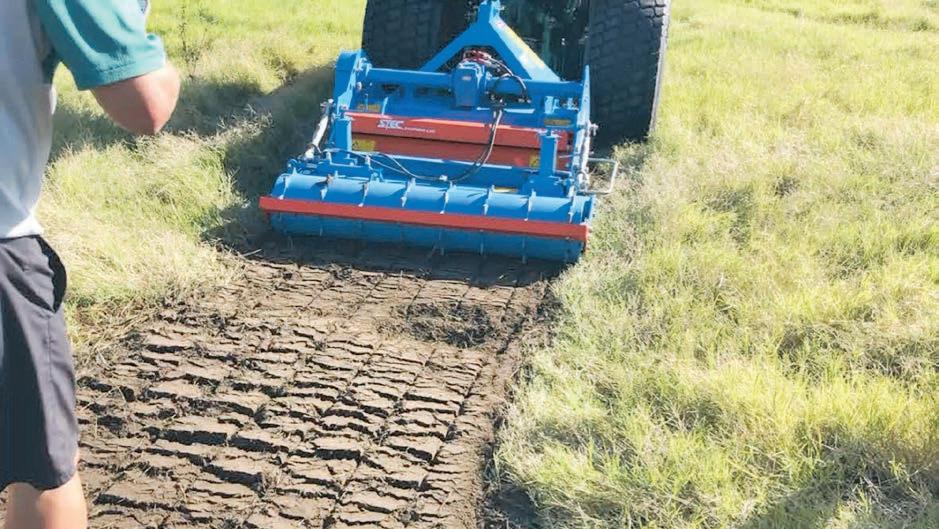
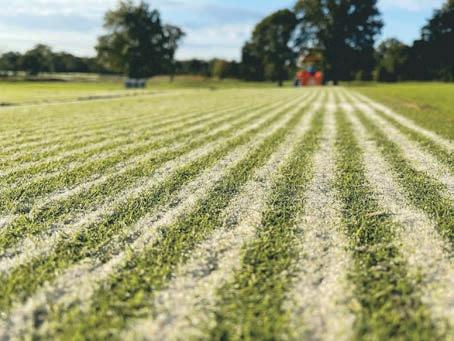

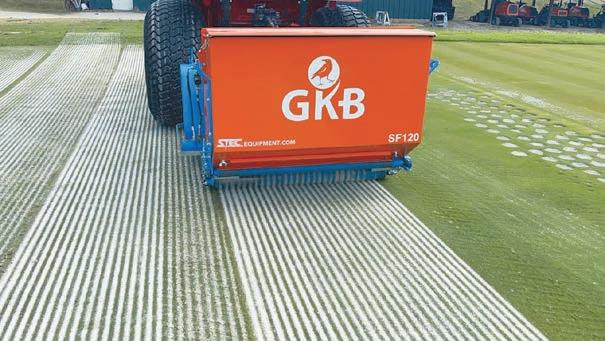
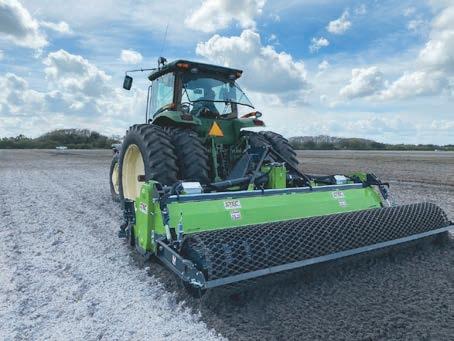
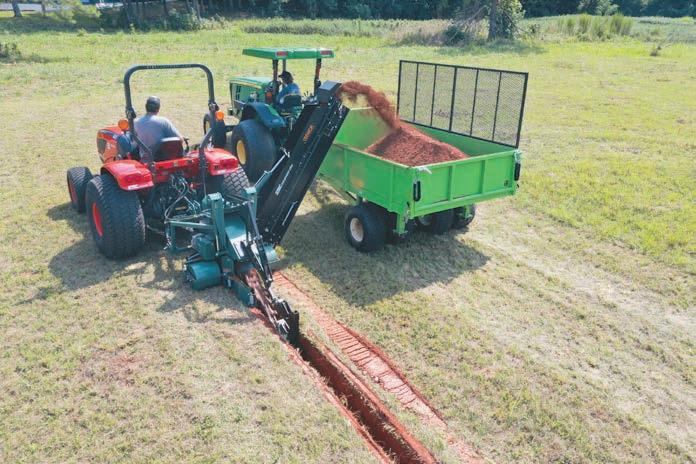


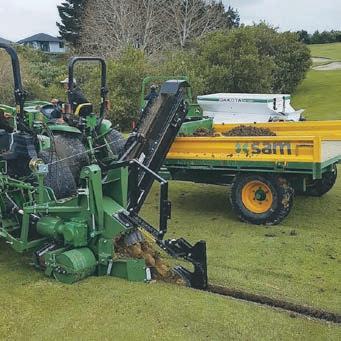
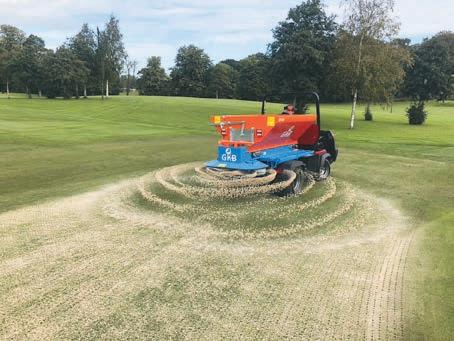

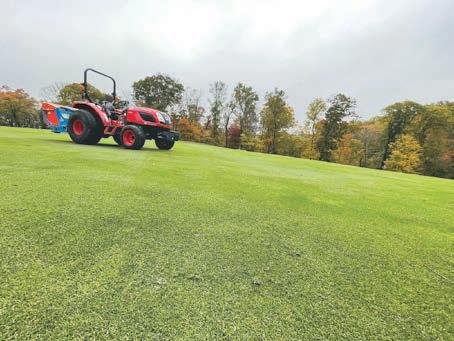
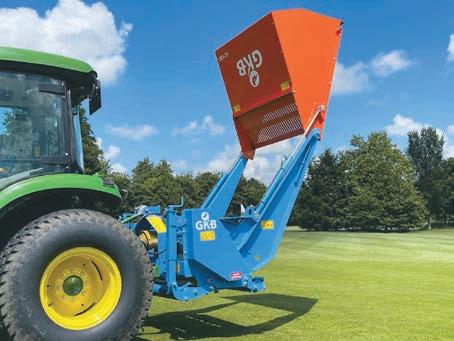

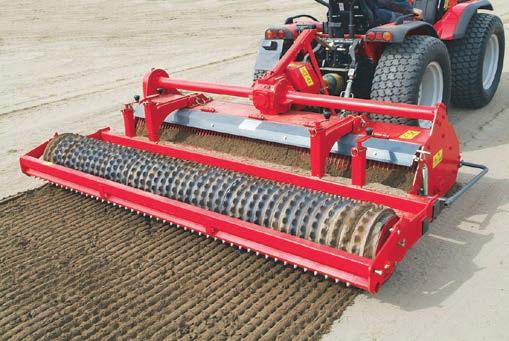
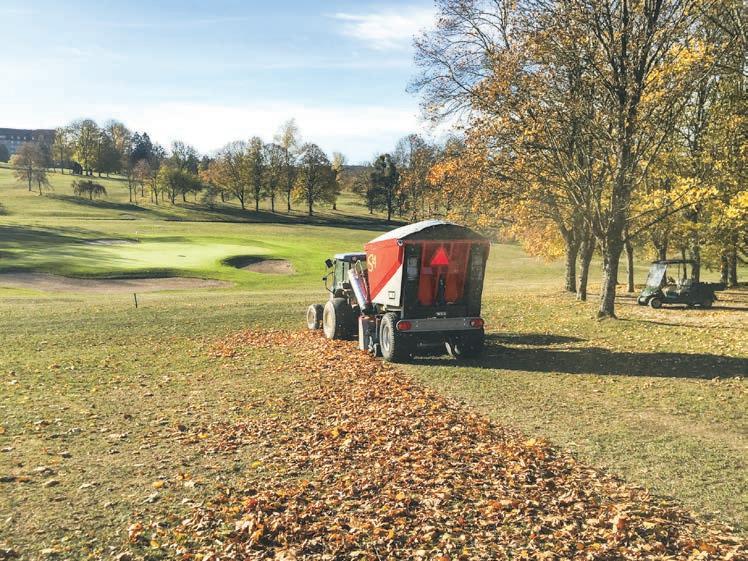

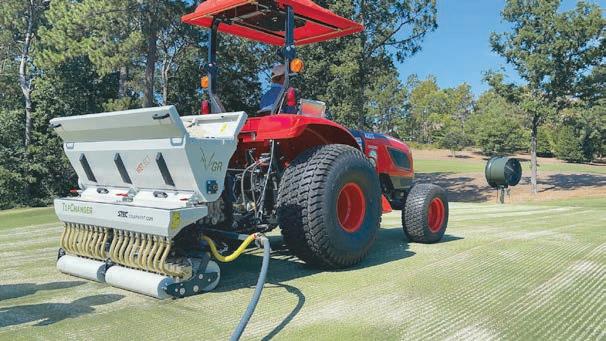





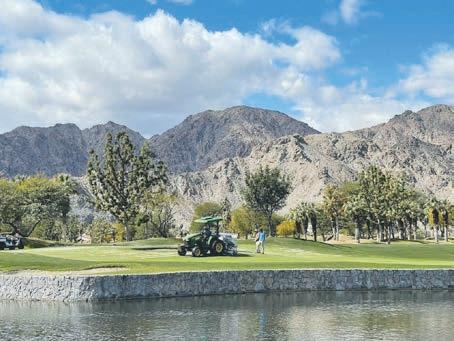

In its current state, the course is made up of the Gilberts’ property along with three neighbors. “I can’t say enough how much the neighbors have been generous to let him do what he does on their land. I think they just enjoy watching him do it,” Brad says.

Dane explains how he determined the initial design of the course: “I just took a wedge around the yard and tested different areas as a tee box. I had to see if it had grass first, so if there was an area that had grass and could somewhat hit the green, that would probably be a hole. We would just go around the yard and design how it would be.”
Though the initial stage of creating a backyard golf course was complete, Dane didn’t stop there. “We redesigned and found areas that were better for holes. We have one where we hit over a hollow, we have green on the other side so it’s like a hazard hole. I find things that would be better to be advanced, better tee locations, better greens,” Dane says.


While Brad is an avid supporter of Dane and the course, he says that Dane himself does the lion’s share of the work. “Sometimes he’ll get my opinion when he wants to redesign a hole, and I’ll just tell him as a golfer what I think a good shot is. He’s good about taking input about that, then he makes it his own. Every now and then he asks me to cut some limbs or assist with things like that, but he really does 95 percent of this on his own.”
Along with designing and building, a course comes with a serious amount of maintenance. Dane has been the beneficiary of a wealth of knowledge, not to mention tools and equipment, from golf course professionals.
How does an eighth grader acquire the tools of the trade? Dane says, “A family friend (Jim Herron), gifted us an old greens mower, and my uncle helped me fix it up, it’s an old Toro. We’ve got two cup cutters and a lot of cups that are old that were gifted. We have regular lawn mowers and weedeaters. I have a ton of flagsticks. My cousin who used to work at The Grove gave me 54 flagsticks that he didn’t want to use anymore.”

But the generosity of the turfgrass industry didn’t just come through in the form of equipment, Dane also had to learn how to use his equipment and to maintain his course. “My uncle taught me how to mow greens,” Dane shares. “I used to go out to work with him and just watch and learn. My dad taught me how to mow, and I kept going up from there.”
And don’t forget the perpetual information source for our Gen-Z future turfgrass professionals – according to his parents, “He has done so much online research on different types of grasses and other turf subjects. We’ve asked him before how he knew something and he says, ‘YouTube’.”


As part of the Hickman County Middle School Golf Team, Dane has found a way to give back to his teammates and community. When he was in sixth grade, his middle school coach had the idea to have a scramble at his golf course to raise money, an event which has raised over $5000 for the team in three years. Brad says, “Once we had people coming to see what he’s done and played on the course, every year he’s worked hard to make it an even better experience.”


In its first year, the tournament hosted 15 two-man teams, and for the last two years it has increased to 25 teams. Dane’s sister, a member of the Freed-Hardeman University golf team, has played alongside her teammates in the tournament. The community support has been tremendous for this event as well. “We have family and friends come and help weed eat, everybody just chips in,” Brad says. “It’s really neat what happens. Then we just have some people come by just to walk around and see the tournament and watch, and they make donations.”

“Charlie at Greystone Golf Club has been really good, he’s given us some prizes when we have the tournament. Charlie got to know Dane through their youth golf events at Greystone, Charlie has taken care of us as well,” Brad added.
While he still has the usual tasks of an 8th grader – school, homework, chores, practicing his sport, time with friends – he’s found a way to fit it all in, which is no small feat of time management!
“I do different things a day,” Dane says. “If I need to mow greens, I do that, and I’m done for that day. If I need to change the hole locations, that a day job. Or if I need to mow the regular yard, that’s a day job. So I just divide it into days. I have some time to chip around in the yard and play a couple of holes before it gets dark.”
With this strong foundation and experience under his belt, Dane has a head start on his goals.
He hopes to pursue a golf career in the future. “But if that never works out, I always have this as my backup. I can get my turf degree, and this is probably something I’ll do in the future.”


The ingenuity, work ethic and dedication needed to be successful in any industry usually takes years to develop, but with some industry and community support and some big dreams to chase, Dane has found the secret recipe. There’s no doubt that this outstanding young man has a great career ahead, whether he’s playing or maintaining golf courses.
We asked Dane what his advice would be for others his age who have an interest in golf or turfgrass management, and he offered some ageold wisdom we can all take to heart: “Keep working at it. In the summer, it’ll get dry and start dying, and you just want to not do it anymore. But just keep working at it. Over the years that you keep mowing, it just keeps getting better and better.”

 By Jay McCurdy Ph.D., Associate Professor, Turfgrass Extension Specialist Department of Plant & Soil Sciences Mississippi State University
By Jay McCurdy Ph.D., Associate Professor, Turfgrass Extension Specialist Department of Plant & Soil Sciences Mississippi State University
Recent, rapid urbanization has driven the development of urban green space in the United States and abroad. The world population has almost doubled since 1970, and more than 80% of U.S. citizens reside in urban areas. As a result, much traditionally rural, agricultural, and wild land has been converted to lawns, parks, sports surfaces, etc. for aesthetics, recreation, and ease of maintenance.
Simultaneously, cities and suburbs are filling with folks who are willing and able to change their habits to fit their belief systems—supporting wildlife conservation, reducing inputs like water and fertilizer, and decreasing fossil fuel use. Those trends will continue, so how can the turf industry meet the needs and demands of an increasingly ecologically and socially conscious society?
Lawns and other grasslands are important in built environments. They offer greater noise and heat abatement than pavement, hardscape, and synthetic landscaping. However, turf does not replicate the cooling and shading effects of tree canopy, nor does it fill the habitat void left after clearing and removing natural environments for communities.
Turf provides erosion control, nutrient infiltration, and a familiar, low-maintenance aesthetic. Historically, one of turf’s main benefits has been line-of-sight for protection and separation from other humans and the wild—think roadside visibility, fire abatement, pest control, and home defense. With time, those practicalities have developed into the quintessential “American lawn.” Urban citizens worldwide recognize grasslands maintained as turfgrass lawns or open green spaces, such as parks, for their recreational and social functions as well as their aesthetics.
• Lawns are not going away, but how we manage them is changing. •

Problems arise from reliance upon any one system. Turf often lacks species richness, and many modern management practices are ecologically insensitive. For instance, turfgrass’s role in carbon sequestration is often touted, but the positive effect of sequestration may be nullified by management practices such as the seed, sod, and transport to establish, mowing, pest management, irrigation, and fertilization. The literature suggests that even modestly maintained lawns may be net greenhouse gas emitters. Most importantly, lawn-age limits the peak sequestration—that is, once a lawn reaches a certain age (30 to 70 years old), the carbon released through decay equals that absorbed in growth (Gu et al., 2015; Tidåker et al., 2017). Regardless of the net balance, reducing fertilization and mowing frequency are essential to minimizing environmental harms (Law & Patton, 2017).
Repeated pesticide and fertilizer application, as well as mowing, favors monoculture rather than plant biodiversity, although biodiversity is generally a key indicator of healthy ecosystem function. The detriments of “industrial” monoculture lawns have been much-discussed, but few arguments have focused on suitable alternatives for the typical suburban homeowner. Our collaborations with others in the southeast (see RefugeLawn.com)
promise new plant materials and systems that incorporate forbs for pollinator habitat, but changing a societal norm like monoculture turfgrass is a slow process and will not be for everyone.



Lawns are not going away, but how we manage them is changing. New approaches to sustainable lawn and land care will incorporate the following principles:
1 ) Plant material selected for low inputs. Preempting regulation requires good science, and there’s no better science than appropriate species and variety selection. Evaluation efforts like the National Turfgrass Evaluation Program (NTEP), the Turfgrass Water Conservation Alliance (TWCA), and others are trying to guide selection. Considerations include drought and shade tolerance, nitrogen requirements, and required mowing frequency. Progress is also being made to increase lawn diversity by including legumes for nitrogen fixation and nutrient cycling, as well as flowering forbs for pollinator habitat.
Broadly, this involves understanding nutrient cycling within living systems and the underlying effects of soil microflora and fauna. These interactions may improve carbon sequestration, reduce fertilizer and irrigation requirements, and substantially reduce inputs in turfgrass systems. We have much to learn but focusing on plant health is undoubtedly our industry’s new direction. The difficult part is educating the average consumer.
Lawns are relatively high-input agronomic systems. Nitrogen fertilization, chemical pest management, and mowing require energy expenditure, typically fueled by the burning of hydrocarbon-rich fuels. Equipment and noise emissions from internal combustion engines are key concerns associated with lawn maintenance.

Internal combustion engines power most lawn maintenance equipment, but that is rapidly changing. Stakeholders and operators are adopting electric-powered equipment to conserve fuel, reduce noise, and simplify use. Studies of the cost of electric
mowers over a 10-year lifespan, factoring in production costs and fuel emissions, suggest at least a 30% decrease in CO2 emissions by switching to battery-powered mowers (Saidani and Kim, 2021). The emissions are further reduced when renewable energy sources are used to generate electricity.
Many incentives and regulations are guiding the move from gasoline- to electric-powered vehicles, but those initiatives have historically had little effect on the lawn care industry. That trend is changing. For instance, California law (AB1346) will effectively ban gas-powered small off-road engines (SORE) of 25 horsepower or less on January 1, 2024, subject to court injunctions and feasibility studies. The battery-powered outdoor equipment industry is adapting, and not just in California.
Even modern electric-powered mowers are not yet widely capable of performing the functions of internal combustion engine mowers; however, reliable autonomous mowing devices have arisen simultaneously. The installation and maintenance of these devices is a whole new market.
We are witnessing rapid transformation on many fronts. The public perception of landscapes and their roles in society is changing. We are riding a post-pandemic high of outdoor recreation interest, but societal norms, market forces, and regulation inevitably coalesce to challenge entrenched ways of thinking.

For a preview, we must consider regional trends. We see movement toward low-maintenance, live-and-let-live roadsides, parks, and lawns throughout much of Europe. Minneapolis has a program to interseed nitrogen-fixing legumes into lawns. The “NoMow-May” and “Let-It-Bloom-June” initiatives focus on providing pollinator habitat in England. The U.S. golf industry has done a tremendous job promoting natural areas as beneficial for wildlife (and budgets).
I am both nervous and excited about these challenges. I am not disparaging turf, but I know that turf is only one part of a living, functioning built environment. We need defensible, science-based rationales for why lawns are important and how to improve them. We must also realize that lawn for lawn’s sake is not a winning argument. Our toughest challenge is to make turf both societally and ecologically positive.
Gu, C., Crane II, J., Hornberger, G., & Carrico, A. (2015). The effects of household management practices on the global warming potential of urban lawns. Journal of Environmental Management, 151, 233-242.
Law, Q. D., & Patton, A. J. (2017). Biogeochemical cycling of carbon and nitrogen in cool-season turfgrass systems. Urban Forestry & Urban Greening, 26, 158-162.

Saidani, M., & Kim, H. (2021). Quantification of the environmental and economic benefits of the electrification of lawn mowers on the US residential market. The International Journal of Life Cycle Assessment, 26(6), 1267-1284.
Tidåker, P., Wesström, T., & Kätterer, T. (2017). Energy use and greenhouse gas emissions from turf management of two Swedish golf courses. Urban Forestry & Urban Greening, 21, 80-87.


